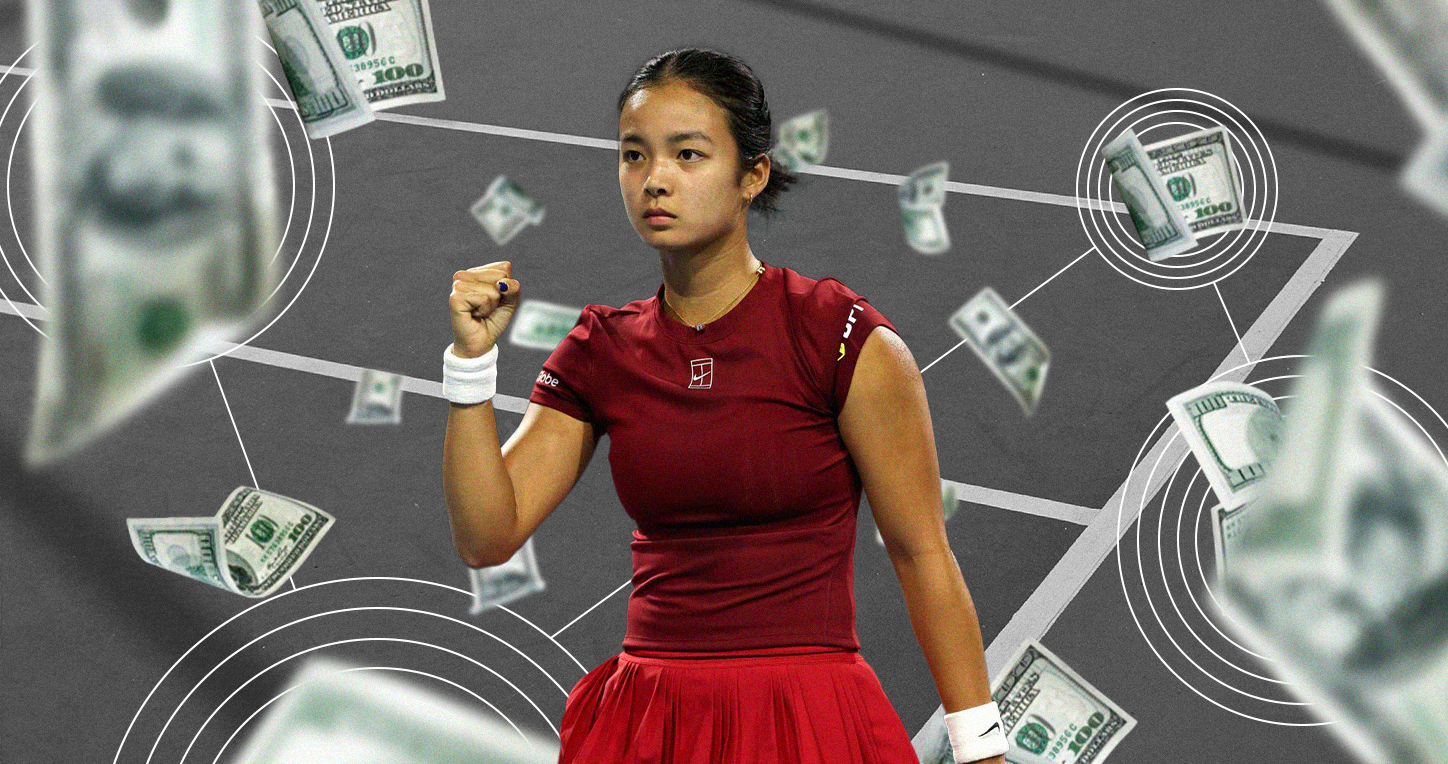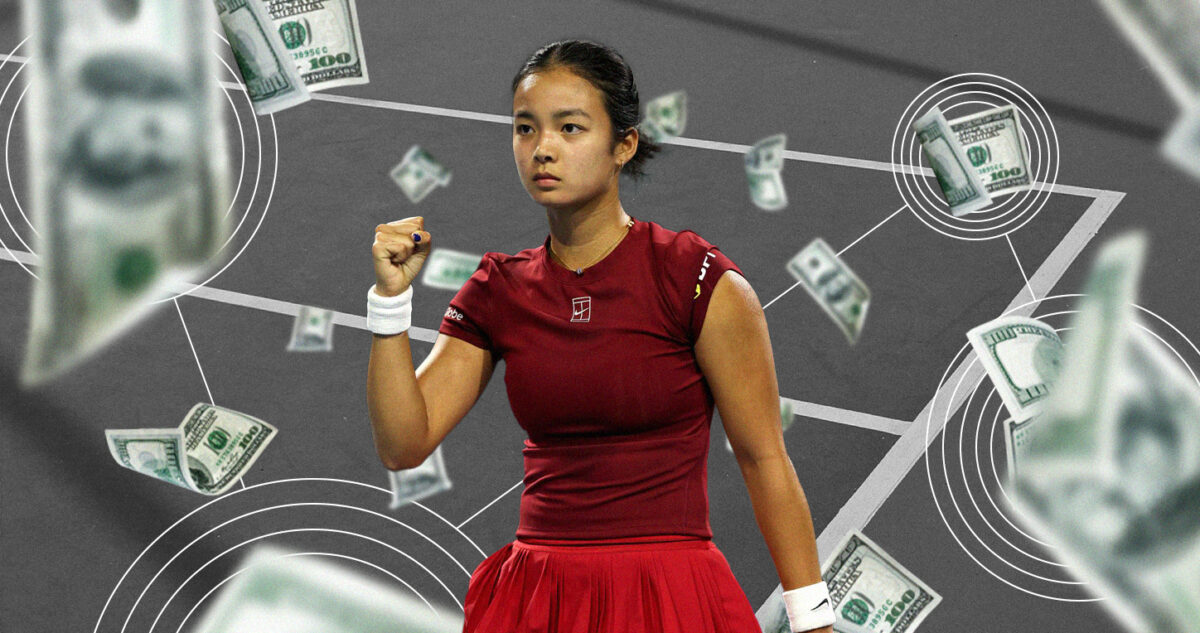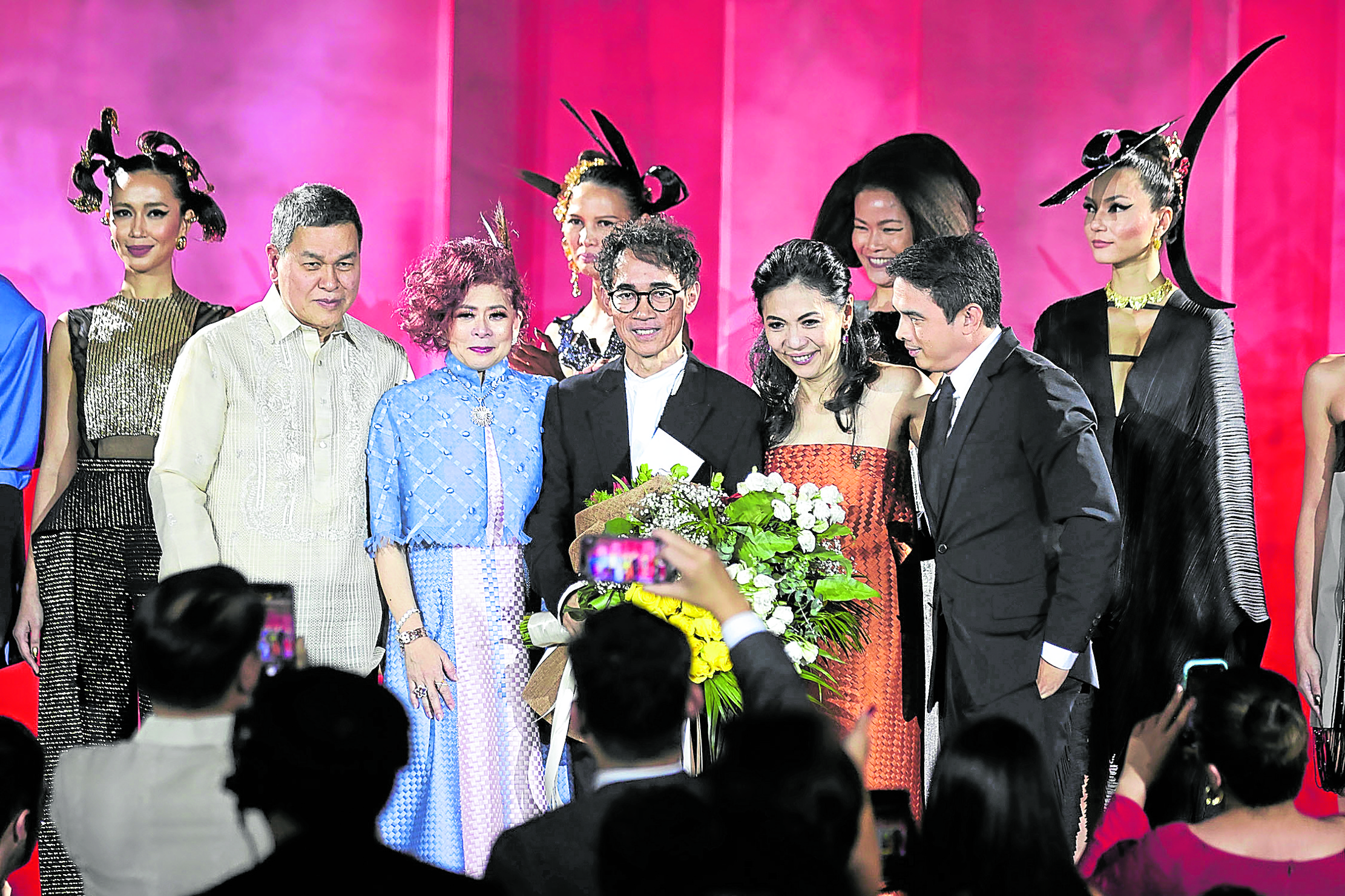
Still waters run deep, as the adage goes, best describes designer Ivarluski Aseron, whose mild-mannered, introverted but passionate ways reflect in his clothes.
At the Red Charity Gala held at Peninsula Manila last Oct. 8, Aseron chose a palette of calming and warm colors—gray, black, navy, dusty blue and burnt orange. Silver and gold added distinction and glamour.
First lady Liza Marcos appropriately wore a red terno, made with Aseron’s signature banig or woven strips on the bodice and sleeves and a draped chiffon skirt. It belonged to a state visit wardrobe which he designed for her last year.
Known for reinventing fabrics, Aseron is considered as one of the most forward-thinking and consequential designers today. He looks into the potentials of the cloth and the fabric manipulation methods in order to produce originality in creation. His experiments reveal his unique perspective on clothing construction.
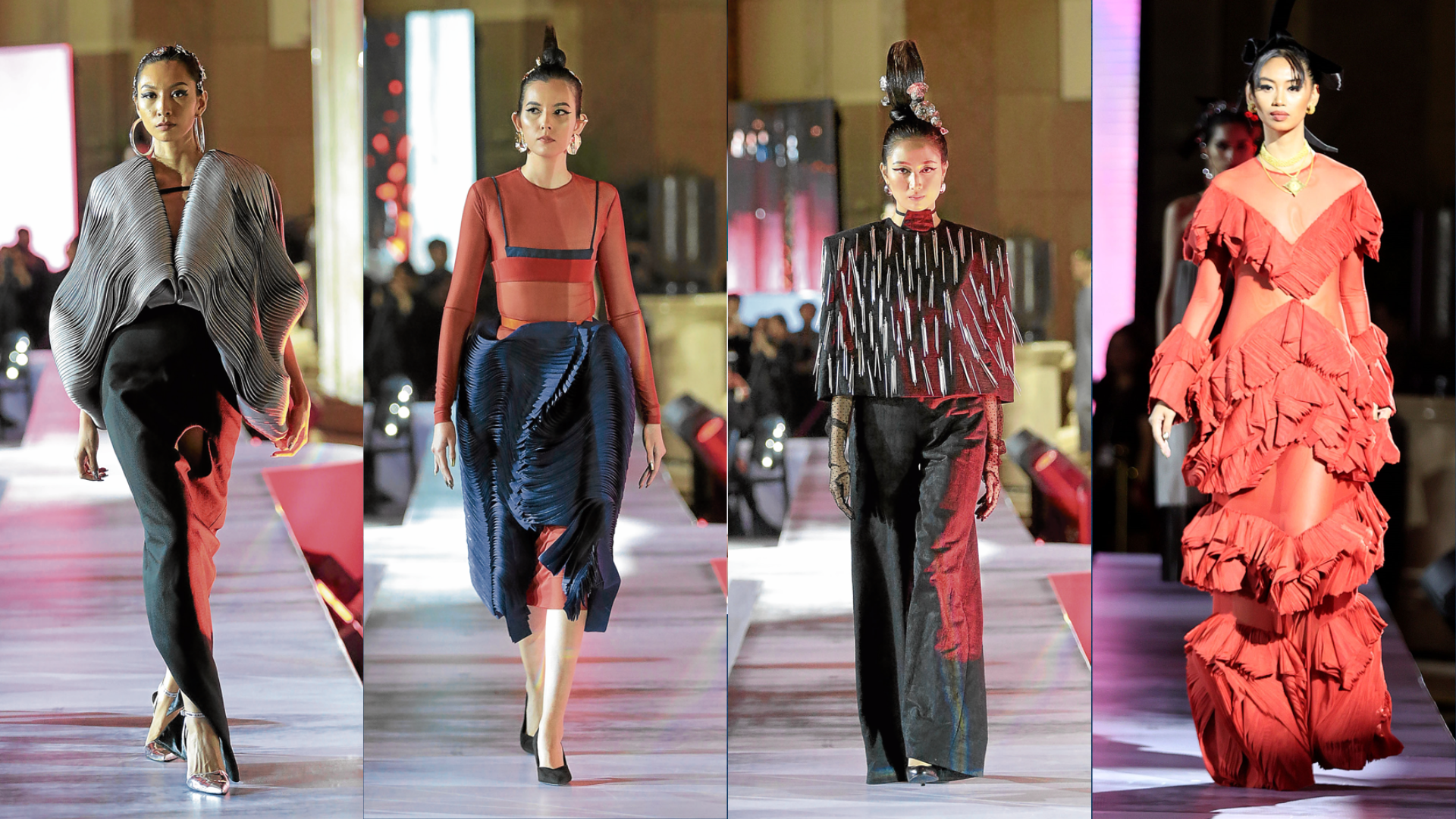
The title of his 54-piece collection, “A Memoir in Motion,” referred to an accumulation of techniques that had been refined through the years. These garments required the fastidious and highly skilled hand-stitching and beadwork that define couture.
With the aid of stylist/consultant Noel Manapat, who helped coin the names, here were the prevailing looks.
Venetian blinds. Referencing Venetian blinds, individual laser-cut strips were connected to each other with fine beads so that they would move together when draped.
Likewise, these connecting beads formed tiny gaps between the rows. When the lights hit the “Venetian blinds,” shadows cast to create patterns on the body. Some of the “blinds” accentuated an outfit to form a rolling landscape. Other dresses were made entirely of blinds that were swept into a pouf on the hemline.
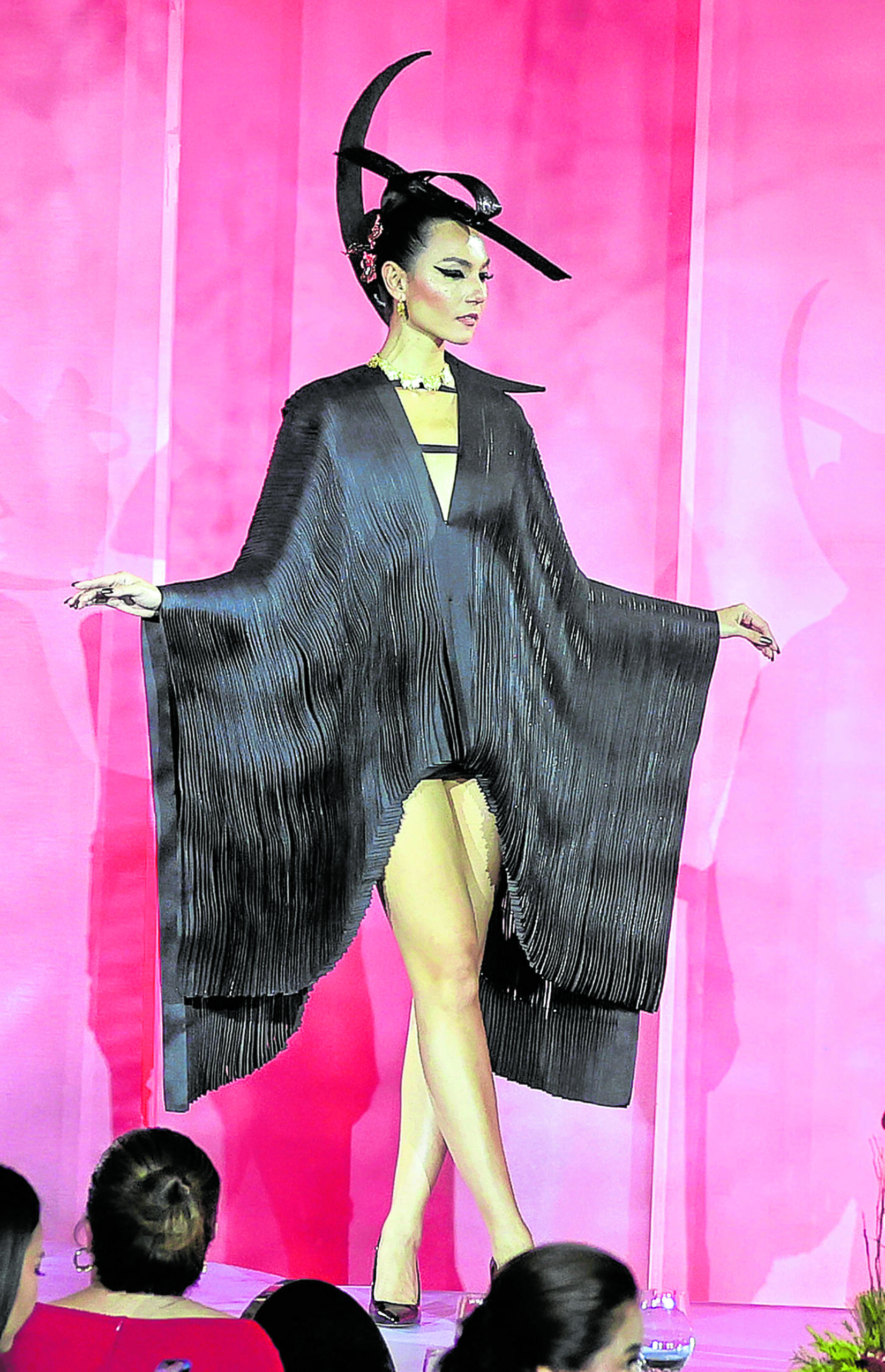
Sewing tools as decor. Huge needles and big zipper pulls embellished Aseron’s trademark silhouettes, be they loose and androgynous or squarish. The designer worked with Jul B. Dizon Jewellery to create statement pieces. Exaggerated zipper pulls served as tassels and fringes and emphasized the movements of the wearer.
Redefining glamour with an edge, a huge silver needle with a white thread hanging out of it was inserted onto the front of a black silk, draped gown.
Unusual details
Jigsaw puzzles. Irregularly contoured pieces that resembled jigsaw puzzles were presented in different ways. For instance, large jigsaw puzzle cutouts in metallic striped fabric were sewn onto a sheer tulle cocktail dress to form a pattern.
Jul B. Dizon Jewellery also produced an electroplated breastplate, made of jigsaw puzzles, which complemented the short, metallic-striped pantaloons. Another look was a gold jigsaw cufflink on a huge white French cuff over a black dress. The jewelry company likewise created metallic jigsaw accessories that added whimsy to the formal clothes.
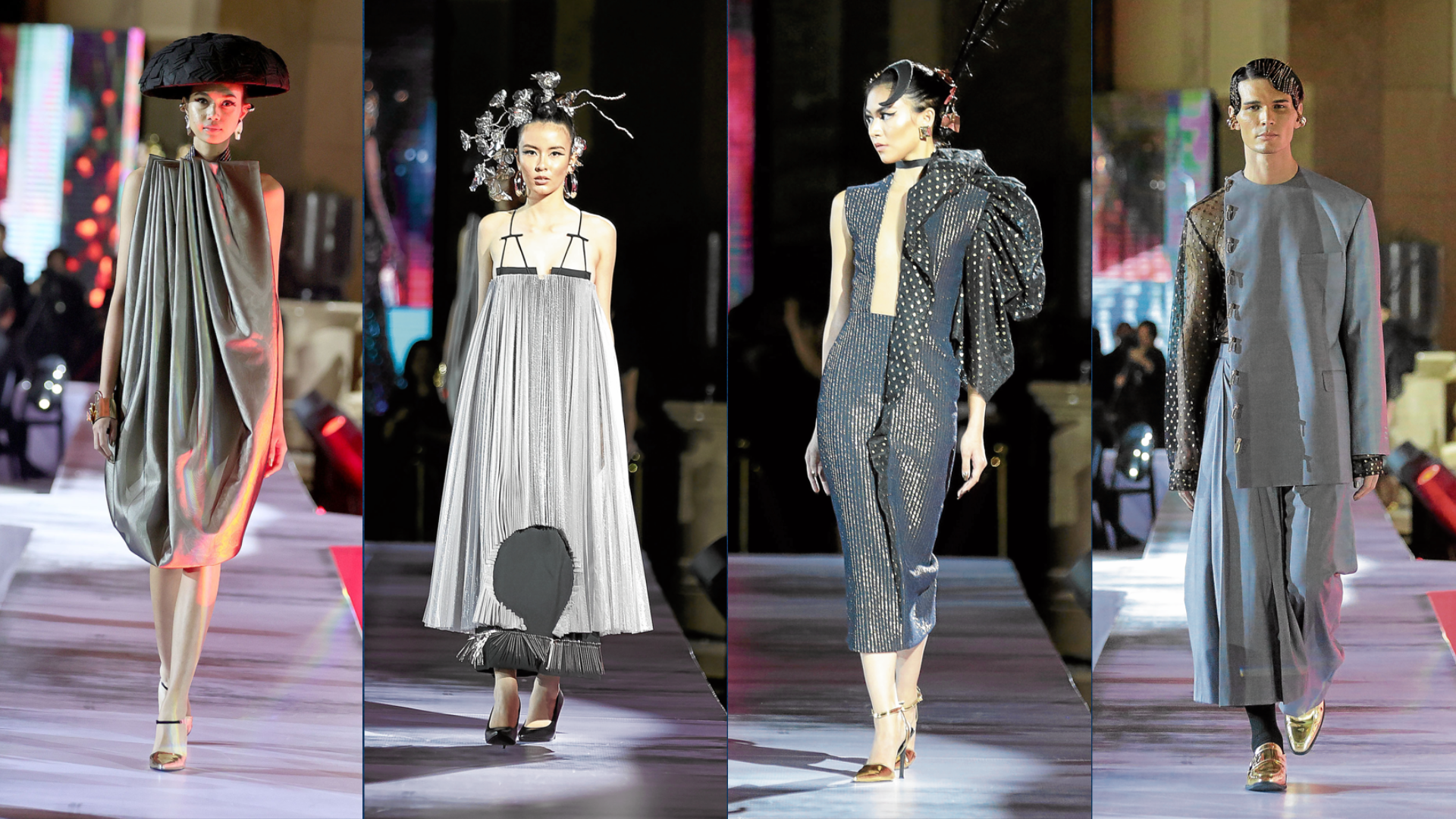
“There are many ways to present a puzzle,” said Aseron.
Book leaf. One of Aseron’s early techniques, the book leaf pattern, is a series of laser-cut strips attached to each other along a binding edge like pages of a book. Some “book leaves” were sewn to produce unusual details on the outfits. Other dresses, made entirely of book leaves, were a play of contrasting fabrics to create asymmetrical patterns. In motion, they rustled like the pages of a book.
Beadwork. The piece de resistance was the geometric gown made of thousands of cut beads strung together instead of being sewn on a fabric base. It took four sewers to complete the garment in two-and-a-half months. Model Jo Ann Bitagcol was the perfect muse for this climax.
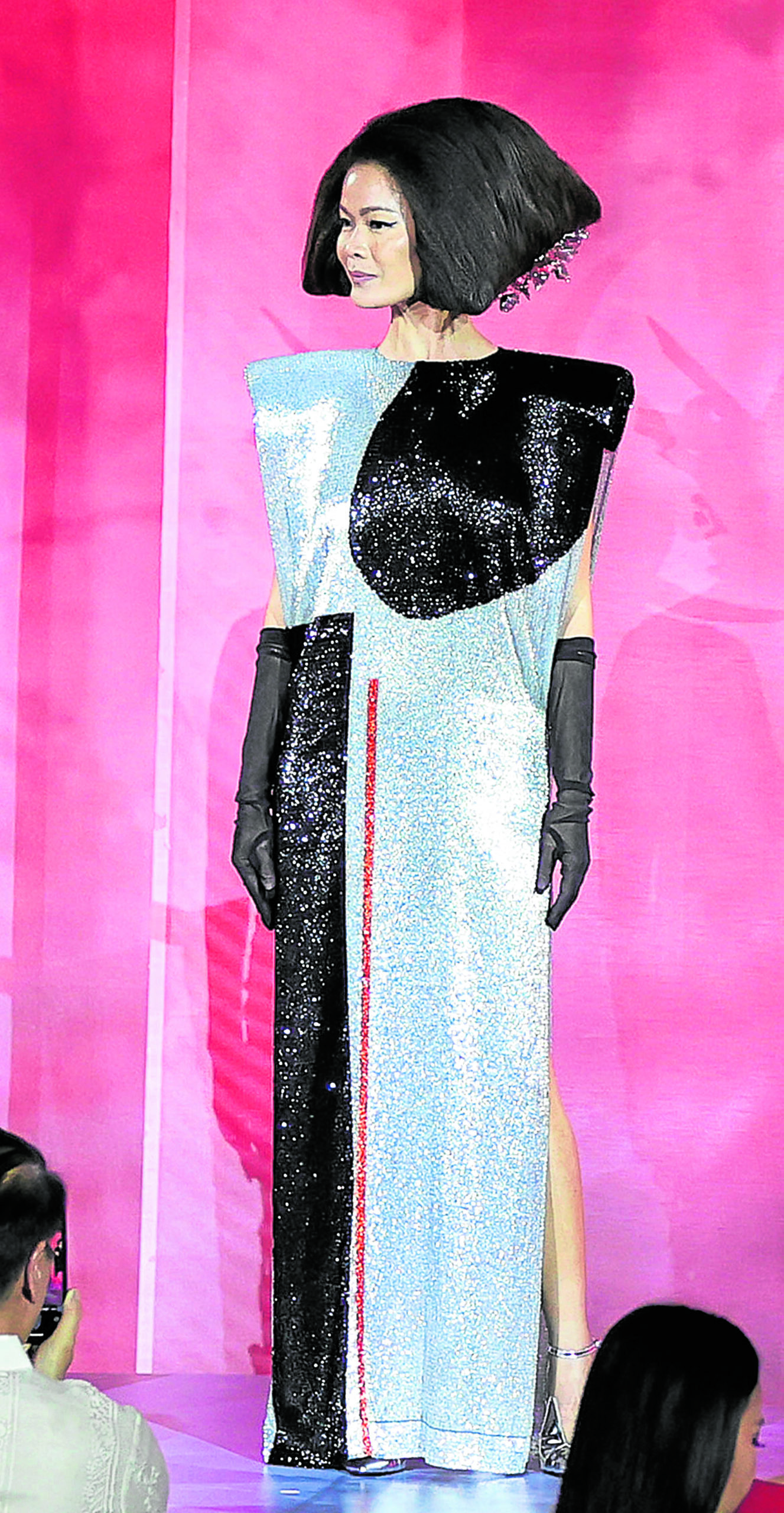
These techniques were translated into Aseron’s menswear. Like in Japanese design, his clothes concealed the body in unstructured shirts and pants while celebrating freedom of movement. It takes a brave metrosexual to get away with the asymmetrical suits, adorned with “blinds,” beadwork, jigsaw cutouts and book leaf strips.In production, Aseron makes use of his delicate physique by donning his experiments to feel how they move. Once satisfied, he produces a “mock-up” for a dress form which his sewers can follow.
There’s a certain personality who would wear Aseron’s clothes, and it’s certainly not the women who are into froufrou.
“It’s someone who is not afraid to be different. They like to stand out but in a subtle way,” he said.
In the context of Philippine fashion, Aseron’s clothes may seem rarefied yet strangely alluring. —CONTRIBUTED INQ



